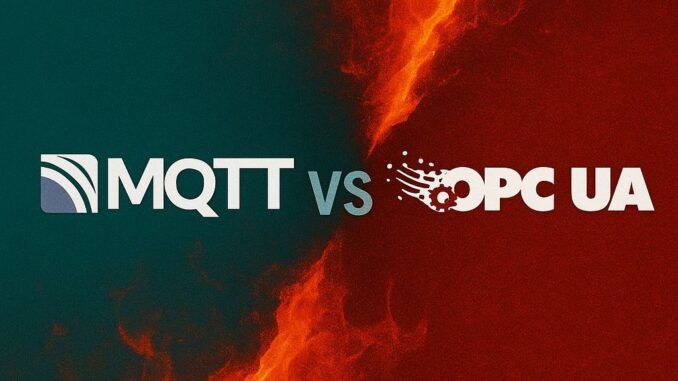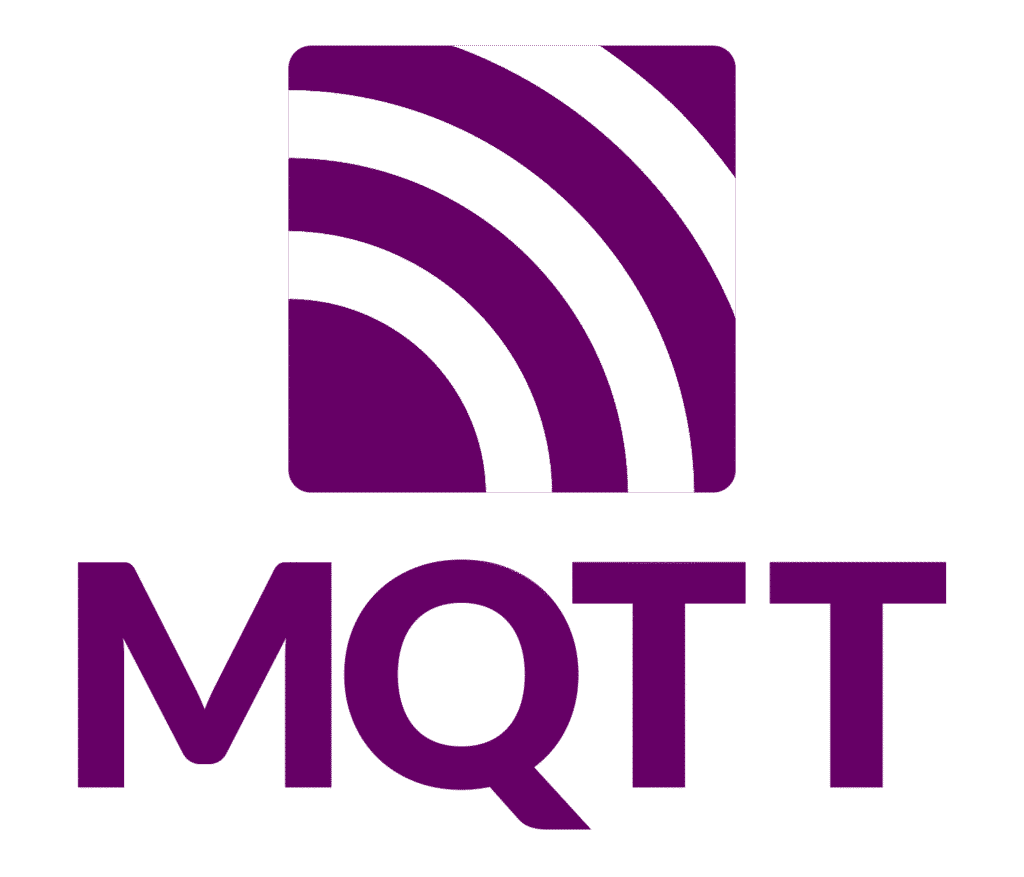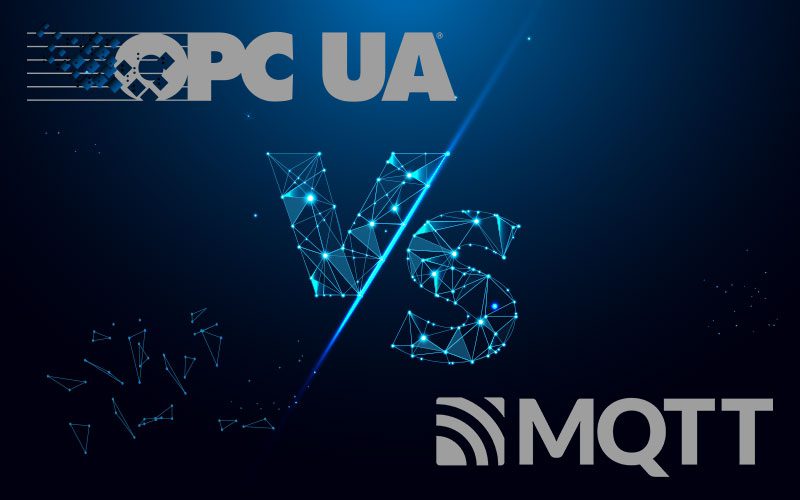
Introduction
MQTT or OPC UA—which protocol should you choose for IIoT and Industry 4.0? As factories, IoT devices, and cloud platforms become more connected, selecting the right communication standard is critical. While MQTT is lightweight and cloud-friendly, OPC UA offers rich, secure, and interoperable data exchange for industrial automation. In this guide, we compare both protocols, highlight their pros and cons, and help you decide which one fits your needs best.
What is MQTT?
MQTT (Message Queuing Telemetry Transport) is a lightweight, open-standard messaging protocol designed for low-bandwidth, high-latency networks. It follows a publish-subscribe model, making it ideal for IoT environments.
Key Features of MQTT:
- Lightweight and fast, even in poor network conditions.
- Uses broker-based architecture (publisher, broker, subscriber).
- Excellent for cloud-to-device and device-to-cloud communication.
- Widely used in smart sensors, home automation, and remote monitoring.

What is OPC UA?
OPC UA (Open Platform Communications Unified Architecture) is an industrial communication standard designed for interoperability between machines, devices, and applications. Unlike MQTT, it is data-rich and provides advanced security and semantic modeling.
Key Features of OPC UA:
- Supports both client-server and publish-subscribe communication.
- Enables data modeling with semantic context.
- Built-in security with authentication and encryption.
- Perfect for industrial automation, SCADA, and PLCs.

MQTT or OPC UA: Key Differences
Here’s a side-by-side comparison to understand the strengths of each protocol:
| Feature | MQTT | OPC UA |
|---|---|---|
| Communication Model | Publish-Subscribe | Client-Server + Publish-Subscribe |
| Data Payload | Lightweight messages | Rich data with semantics |
| Bandwidth Usage | Very low | Moderate to high |
| Security | Depends on TLS | Built-in robust security |
| Best For | IoT devices, sensors, cloud apps | Industrial automation, SCADA, PLCs |
Pros and Cons of MQTT
MQTT has gained massive popularity in IoT because of its lightweight design and simplicity. But like any technology, it has both strengths and limitations.
✅ Advantages of MQTT
- Lightweight & Efficient
- Requires minimal bandwidth, making it perfect for environments with unstable or slow connections.
- Easy Integration with Cloud
- Works seamlessly with AWS IoT, Azure IoT Hub, Google Cloud IoT, and other platforms.
- Scalability
- Can support thousands or even millions of devices with low overhead.
- Low Power Consumption
- Ideal for battery-operated IoT devices like sensors and trackers.
- Quick Deployment
- Simple broker-based setup allows fast and cost-effective implementation.
❌ Disadvantages of MQTT
- Limited Data Semantics
- MQTT only transports raw data—there’s no built-in way to describe what the data means.
- Weaker Security (By Default)
- Security depends on TLS/SSL and external mechanisms since it’s not part of the core standard.
- Not Industrial-Specific
- MQTT is great for IoT, but less suited for complex factory systems that require rich data models.
- Broker Dependency
- The central broker can become a single point of failure if not managed properly.
Pros and Cons of OPC UA
OPC UA was designed with industrial automation in mind, making it far more powerful in certain contexts. However, it also comes with trade-offs.
✅ Advantages of OPC UA
- Rich Data Modeling
- Provides semantic-rich communication, meaning machines understand not just data but its context.
- Built-in Security
- Offers authentication, encryption, and user access control by default.
- Vendor Independence
- Connects machines and systems from different manufacturers seamlessly.
- Flexible Architecture
- Supports both client-server and pub-sub, giving adaptability for different industrial needs.
- Supports Digital Twins & Analytics
- Data semantics make OPC UA perfect for advanced Industry 4.0 use cases like predictive maintenance and AI-driven operations.
❌ Disadvantages of OPC UA
- Resource Intensive
- Requires more computing power and stable networks compared to MQTT.
- Complex Setup
- Implementation takes more time, effort, and expertise.
- Slower in Low-Bandwidth Networks
- Not as efficient as MQTT in constrained environments.
- Steeper Learning Curve
- Engineers and developers need training to implement OPC UA correctly.
When to Choose MQTT or OPC UA?
The choice between MQTT or OPC UA depends largely on your application requirements, network environment, and integration goals. Here’s a breakdown to help you decide.
✅ When to Choose MQTT
MQTT is the best fit when you need lightweight, scalable, and cloud-friendly communication.
Ideal Scenarios for MQTT:
- IoT Applications
- Smart home devices (lights, thermostats, appliances).
- Wearables transmitting health data to mobile apps.
- Remote Monitoring
- Oil & gas pipeline sensors, water level sensors, environmental monitoring stations.
- Low Bandwidth Environments
- Works even in unstable mobile, satellite, or rural networks.
- Cloud Integration
- Perfect for pushing IoT data into AWS, Azure, or Google Cloud for analytics.
- Large-Scale Sensor Networks
- Can handle millions of devices with minimal overhead.
✅ When to Choose OPC UA
OPC UA shines in industrial automation and mission-critical systems where data security, interoperability, and semantic-rich communication are essential.
Ideal Scenarios for OPC UA:
- Manufacturing Automation
- Connecting PLCs, HMIs, CNC machines, and SCADA systems.
- Energy & Utilities
- Power grid monitoring, substations, renewable energy plants.
- Pharmaceutical & Food Industries
- Machine-to-machine communication with strict compliance requirements.
- Digital Twins & Industry 4.0
- OPC UA’s semantic modeling makes it perfect for predictive maintenance and AI analytics.
- Cross-Vendor Integration
- Needed when machines from multiple vendors must work together seamlessly.
✅ When to Use Both Together (Hybrid Approach)
In many real-world Industry 4.0 systems, it’s not always MQTT vs OPC UA, but MQTT + OPC UA working together.
Hybrid Example:
- OPC UA: Used inside the factory to connect PLCs, robots, and SCADA securely with rich data models.
- MQTT: Used to push filtered or aggregated factory data to the cloud for analytics, dashboards, or AI applications.
This hybrid approach gives organizations the best of both worlds—robust industrial communication and efficient cloud connectivity.

Can You Use Both Together?
Yes! Many modern IIoT systems combine MQTT and OPC UA. OPC UA handles local industrial interoperability, while MQTT connects data to cloud platforms. This hybrid approach provides the best of both worlds.
Conclusion
In the world of IIoT and Industry 4.0, choosing the right communication protocol can make or break your digital transformation strategy. Both MQTT and OPC UA play vital roles, but their strengths lie in different areas.
- MQTT is best when you need a lightweight, fast, and scalable protocol for IoT devices, remote sensors, or cloud integration. It’s easy to implement, highly efficient in low-bandwidth environments, and perfect for large-scale IoT ecosystems.
- OPC UA, on the other hand, is the protocol of choice for industrial automation. With its rich data modeling, built-in security, and vendor-independent interoperability, it is the backbone of many Industry 4.0 factories.
If you are struggling to decide MQTT or OPC UA, the answer often depends on where and how you want to use the protocol:
- Go with MQTT if your focus is cloud integration, IoT devices, and lightweight communication.
- Choose OPC UA if your priority is machine-to-machine communication, secure industrial automation, and compliance-heavy industries.
- Consider a hybrid approach if your operations span both IoT and industrial domains. Many modern factories successfully use OPC UA for local automation and MQTT for pushing data into cloud platforms.
Ultimately, it’s not just about MQTT or OPC UA, but about finding the right balance that fits your infrastructure and long-term Industry 4.0 goals.
